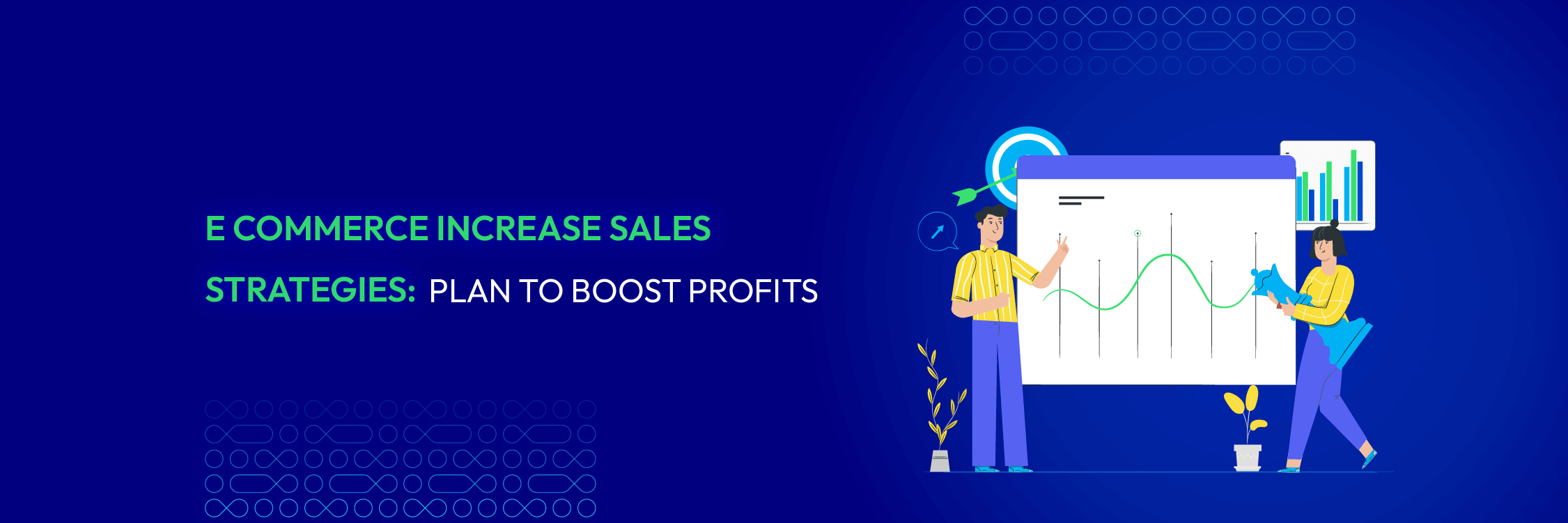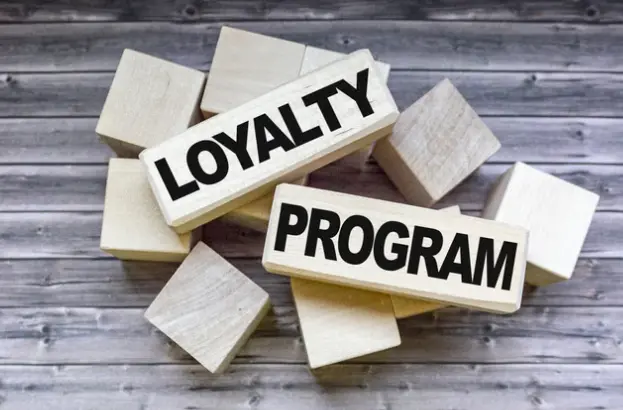15 Must-Try E-commerce Increase Sales Strategies in 2024
Summer Nguyen | 08-28-2023

With the rise of e-commerce, purchasing has never been so simple and quick. Everyone is just one click away from completing their shopping. This, as a result, has completely changed the landscape of the retail industry.
E-commerce brings golden opportunities to merchants, whether they are sellers with little capital or businesses with huge capacity. However, the cake for more people naturally requires fiercer competition.
If you want to leave an impressive footprint in this market, it’s the best time to explore and apply actionable strategies to increase e-commerce sales. But what exactly are these strategies? This article will reveal it to you soon!
Key Trends And Challenges In E-commerce Sales

E-Commmerce Trends
-
Mobile commerce (m-commerce): The proliferation of smartphones has catalyzed the expansion of mobile commerce. With 91% of social media users users engaging through mobile devices and 80% of total time spent on social media occurring on mobile platforms, it’s no surprise that social commerce is on the rise . Mobile commerce websites are now weaving into an overarching omnichannel strategy, creating a holistic experience across online and offline channels
-
Personalization and customer experience: Tailoring recommendations and providing personalized shopping experiences is vital for attracting and retaining customers in the competitive e-commerce market. According to Epsilon, 80% of respondents prefer organizations that offer tailored experiences, while 90% find personalization desirable.
-
Rise of omnichannel retailing: E-commerce businesses must integrate online and offline shopping channels to provide a seamless experience across multiple touchpoints. Digizuite reported that top omnichannel brands experience a 9.5% yearly increase in revenue, compared to 3.4% for those with poor omnichannel strategies.
-
Voice commerce: Voice-activated shopping experiences are gaining popularity with the rise of smart speakers, requiring e-commerce platforms to optimize for voice search and commands.
-
Sustainability and ethical consumerism: Customers demand eco-friendly practices and transparent supply chains, pushing e-commerce retailers to prioritize sustainability and communicate their efforts effectively.
E-commerce Challenges
-
Intense competition: Standing out in a crowded e-commerce market requires unique offerings, competitive pricing, superior customer service, and innovative marketing strategies.
-
Cybersecurity and data protection: E-commerce businesses face the challenge of safeguarding customer data from breaches, and fraud, and complying with data protection regulations.
-
Logistics and fulfillment: Efficient inventory management, reliable shipping, and timely delivery are crucial for a positive customer experience.
-
Changing consumer expectations: To meet the dynamic demands of consumers, online retailers must embrace evolving preferences, ensuring swift delivery, convenient returns, and customized interactions.
-
Last-mile delivery: Optimizing the final leg of delivery, including routing, timely execution, and addressing potential issues, is a significant challenge in e-commerce logistics.
5 Causes Of Low E-Commerce Sales
In fact, many things cause your e-commerce business to fall into low sales. In this section, we will mention the 5 most common reasons:
-
Poor website design: Tough navigation, not appealing graphics, poor user experience and lack of simplicity can result in a bad customer experience and low conversions.
-
Ineffective marketing strategies: Marketing plan failure or inadequacy will spoil e-commerce sales. Identifying the target audience and marketing mix inaccurately may result in reduced levels of website traffic, and sales may be low.
-
Lack of trust and security: Trust is a key success factor for e-commerce. The payment security of customers’ personal information, payment transactions or authenticity of products/services can create doubt in their minds and it is not likely for them to make a purchase.
-
Poor product descriptions and imagery: Vague or incomplete details that do not highlight unique selling points are likely to confuse clients, making it difficult for them to make informed decisions. Likewise, poor photos that do not really resemble the merchandise can make shoppers discontinue their shopping and choose to buy elsewhere.
-
Complicated checkout process: A lengthy and multifunction checkout process can dissuade some clients. Issues such as complex forms, excessive information requirements, hidden or unclear charges, or restrictive payment mechanisms may cause consumers to give up their carts for any site that offers a simpler purchasing process.

15 Actionable E-Commerce Increase Sales Strategies
1. Optimize Your Website
Maximizing e-commerce sales hinges on a well-optimized website. When designing your website, create a user-friendly interface that provides a seamless shopping experience.

Research conducted by Adobe reveals that 38% of users stop engaging with a site if its layout or content is unattractive. Prioritize an intuitive navigation structure, clear product categorization, and a prominent search bar to help users find what they’re looking for easily.
Furthermore, make sure that your site is run responsively and is mobile friendly because a lot of buyers search and shop online using their mobile devices. The results of this study depict 53% of mobile users give up a website that is loaded in 3 seconds or more what reveals the significance of optimizing the site speed improvement; which in turn will lead to better sales.
2. High-quality product images
Studies indicate that 67% of consumers consider high-quality product images “very important” when purchasing. In other words, visual aspect has a profound impact on your e commerce increase sales goal.
It would be preferable to invest in professional product photography. This will portray your offerings from different angles and allow for a close-up shot. Plus, high-resolution images give customers the possibility to scrutinize the product details. As a result, your customer can understand better and enhance their confidence in buying the product.
Moreover, interactive tools such as the zoom function and a 360-degree panoramic view can improve the customers’ experience and increase conversion rates.
3. Enhance Product Descriptions
Product description is another factor that can impact your e-commerce increase sales strategy. Well-crafted product descriptions that effectively communicate the value of your offerings can significantly impact conversion rates and boost sales.
You certainly own a product description, but how about what are you going to modify it now?
Let’s start by taking the time to craft compelling and informative descriptions that list the features of your products and highlight their benefits.
You need to use persuasive language to engage potential customers and address their pain points. More than that, focus on how your products can solve their problems or improve their lives.
Another helpful strategy is to include related keywords on your page that your target audience might search as this can boost your SEO and lead to more visibility when people enter those words.
4. Implement Cross-selling and Upselling
Cross-selling and upselling techniques are powerful strategies to increase the average order value and maximize revenue per customer.
Cross-selling involves suggesting complementary products to the one a customer is considering or purchasing, while upselling encourages customers to choose a higher-priced option or upgrade.
For e commerce increase sales, you can boost the overall purchase value by strategically recommending related or upgraded products. Implement these techniques by displaying relevant product recommendations on the product page or during checkout.
You can enhance customer satisfaction by effectively cross-selling and upselling while boosting your sales and revenue.
5. Streamline Checkout Process
A smooth and hassle-free checkout process is crucial for converting potential customers into paying ones as it minimizes cart abandonment and boosts sales.
Streamline checkout by reducing the steps and information required. Remove unnecessary form fields to prevent customer discouragement. Include a guest checkout option for people who prefer not to create an account.
Moreover, offer various payment options to accommodate diverse preferences. Accept commonly used methods such as credit cards, digital wallets, and PayPal for customer convenience. A smooth checkout process.

6. Leverage Social Media Marketing
There are many reasons why you should use social media as part of your e commerce increase sales plan.
At the outset, social media platforms assist in doing such a thing as directing people to your online shop. You can have a link in the bio, posts, and stories which people can click to be directly redirected to your product pages.
Moreover, Platforms ads just like Facebook and Instagram allow you to focus your ad campaigns on specific target groups and interests. Here, you communicate with a group which is precisely owed to those who will find your things interesting.
Not all! In fact, it is the age of socializing where everything is conservation and all about conversation. Interacting with your audience, you can receive feedback, reply to queries, address the needs and even create a group of admirers of your brand. It lays down a platform of trust and engagement, which increases the chances for customers to patronize your e-commerce shop.

7. Implement Email Marketing Campaigns
Email marketing remains a powerful tool for nurturing customer relationships and driving sales.
It is a greate idea to generate an email roster of potential buyers and existing customers interested in your products. Classify your audience based on preferences, demographics, or purchase patterns to provide personalized and pertinent content.
Craft engaging email campaigns that provide value to your subscribers, such as exclusive discounts, product recommendations, or helpful content.
According to the Financial Post, for every $1 spent on email marketing, the average ROI is $42, making it a highly cost-effective strategy for driving sales and customer retention.
8. Offer Discounts and Promotions
Customers are often enticed by discounts, promotions, and exclusive offers. Implementing such strategies can encourage them to purchase more from your e-commerce store.

Consider offering discounts, promotional codes, or limited-time offers to incentivize purchases. Flash sales with significant price reductions can create a sense of urgency and prompt customers to act quickly. Free shipping is another effective promotion that can remove a potential barrier to purchase.
Additionally, boost customer loyalty and incentivize repeat purchases by implementing buy-one-get-one (BOGO) deals or loyalty programs. These strategies drive immediate sales while nurturing long-term customer relationships.
9. Implement Abandoned Cart Recovery
Cart abandonment is a common challenge in e-commerce. However, implementing an abandoned cart recovery strategy can recover some lost sales.
Set up automated email reminders to remind customers who have left items in their carts to complete their purchases. Craft compelling email copy that highlights the value of the products and includes a clear call to action prompting them to return to their carts.
To further entice customers, consider offering discounts or free shipping as an added incentive. By implementing an effective abandoned cart recovery system, you can recover potentially lost sales and boost your overall conversion rate.
10. Provide Excellent Customer Service
Furthermore, satisfied consumers are more likely to recommend your business to others, leading to additional sales through positive word-of-mouth. Outstanding customer service is crucial to building customer trust and loyalty. Research by PwC shows that 32% of customers will stop doing business with a company after just one bad experience.

You need to ensure that you provide multiple channels for customer support, like live chat, email, and phone support, allowing customers to reach out in their preferred way. Respond promptly to inquiries and concerns, providing helpful and informative answers.
Additionally, consider implementing a post-purchase follow-up to check customers’ satisfaction and offer assistance if needed. Positive customer experiences create a lasting impression and increase the likelihood of repeat purchases.
Furthermore, satisfied consumers are more likely to recommend your business to others, leading to additional sales through positive word-of-mouth. American Express reports reports that satisfied customers will tell an average of nine people about their positive experiences.
11. Focus on Mobile Optimization
For reaching your e-commerce increase sales journey, it is a good idea to make mobile optimization your priority activity. Why’s that? Actually, many online shoppers prefer using mobile devices, e-commerce businesses that don’t bother with this aspect risk losing out on this potential sales.
Mobile optimization takes into account various parameters, resulting in easily navigating the mobile site for your customers:
-
Fast loading times: Loading the website inadequately can lead to dissatisfaction and users leaving it. Being considerate on the performance of your website, like using smaller files and applying caching methods, is very significant in the process of enhancing it`s loading time.
-
Responsive design: When your site is optimized for smartphone and tablet screens, your users will enjoy a consistent and user-friendly experience on any device they use.
-
Easy-to-use navigation: The ability to navigate intuitively without having to think about where to find information makes it user to locate whatever desired item they need in the shortest time.
12. Utilize User-Generated Content (UGC)
UGC (user-generated content) is a major element of a marketing campaign whose purpose is to generate credibility and authenticity as well as drive conversions.
So, how to start a UGC campaign as a piece of e-commerce increase sales plan? Firstly, you should convince your clients to leave comments on your online store and third-party review sites. A significant number of customers will choose and purchase based on positive reviews. A negative review could, on the other hand, be important feedback to enable service improvement.
Simultaneously, the engagement of customers by the reposting of the photos and videos of themselves with your products should be welcomed. This means of visual content can be put on various social media platforms, product pages, or in your marketing campaign to to showcase real-life usage and benefits.

13. Personalize the Shopping Experience
Personalization is key to providing each customer with a tailored and engaging shopping experience. This, in the end, can help you realize your desire for e-commerce to increase sales. That’s the theory, but how to do personalization in reality?
You may use algorithms to select products that match up in furthering your customer’s past purchases, browsing history, and abandoned carts to the customer. That will allow for a wide range of things, and it will make the probability of buying higher.
Another way is to tailor your marketing messages and offers based on customer preferences and behaviors. This can be done through email marketing, targeted advertisements, or personalized landing pages.
14. Leverage Influencer Marketing
We are living in an era where influencers are on the rise. As the name suggests, influencers are people who have a huge impact on people in a certain field. This includes the fact that people tend to shop based on the recommendations of influencers. Let’s collaborate with the influencer to complete your e-commerce increase sales plan.
At first, it is vital to research and identify influencers who align with your brand values and target audience. Look for influencers with a significant following and high engagement rates.
The next step should be to get in touch with the suitable influencers and identify mutually profitable collaborations. The main aim should be to partner with them on content creation, sponsored posts and product reviews that will help to showcase your products to their audience.
15. Offer Loyalty Programs
Loyalty programs generate frequent purchase cycles and contribute to the generation of a devoted customer base capable of ensuring sustainable sale increase.
Here are some key considerations for loyalty programs:
-
Points system: Employ a point-based framework in which customers accumulate points for every purchase that they make. These redemption points can be used for the discounts, free products, or other exclusive benefits.
-
Exclusive offers: Offer exclusive limited-time offers and/or deals only for members of your loyalty program. This helps create a sense of exclusivity and an ongoing motivation to order from your brand.

Conclusion
In summary, effective e commerce increase sales strategies are vital for thriving in the digital marketplace. Businesses can increase sales and boost profits by optimizing user experience and leveraging data analytics. Embracing a customer-centric approach and adapting to evolving e-commerce trends leads to long-term success and competitive advantage.
Apply e-commerce sales strategies to grow your business. Make informed decisions on resource investment to maximize profits. Try these strategies now and watch your business thrive!





![Top 20+ Must-have Shopify Apps for 2025 [Free & Paid] - Mageplaza](https://cdn2.mageplaza.com/media/blog/must-have-shopify-apps/top-must-have-shopify-apps.png)
![[2025 Updates] Top 10+ Upsell Apps for Shopify - Mageplaza](https://cdn2.mageplaza.com/media/blog/best-upsell-shopify-app/cover.png)